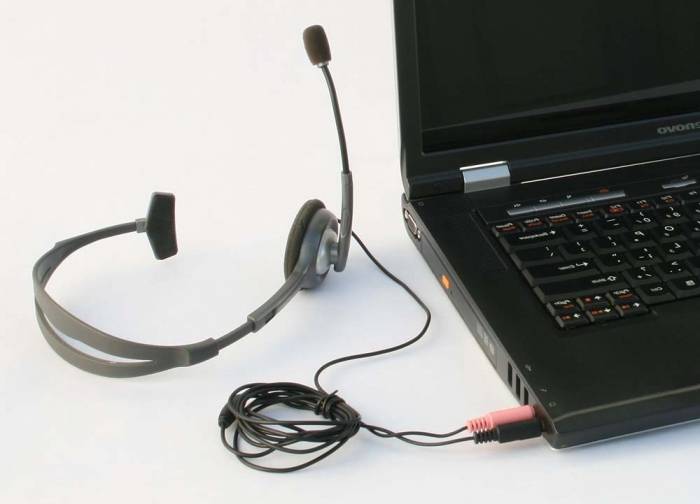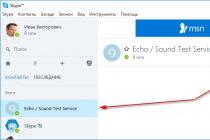Hello.
I never thought there could be so many problems with sound! It is undeniable, but this is a fact - a fairly large number of laptop users are faced with the fact that at one point, the sound on their device disappears ...
This can happen for various reasons and, most often, the problem can be fixed on your own by digging into the settings of Windows and drivers (thanks to which, you can save on computer services). In this article, I have collected some of the most common reasons why sound disappears on laptops (which even a novice PC user can check and fix!). So…
Reason # 1: adjusting the volume in Windows
I, of course, understand that many can express dissatisfaction - " that this is really ..."For such an article. But still, many users do not know that sound in Windows is controlled not only by the slider located next to the clock (see Fig. 1).
Rice. 1. Winows 10: volume.
If you click on the sound icon (located next to the clock, see Fig. 1) with the right mouse button, then several additional options will appear (see Fig. 2).
- volume mixer: it allows you to set its own volume in each application (for example, if you do not need sound in the browser, then it is there that you can turn it off);
- playback devices: in this tab, you can choose through which speakers or speakers to play sound (and indeed, this tab shows all audio devices connected to the device. Moreover, sometimes even those that you do not have! ...).
V volume mixer note if the sound is minimized in your running application. It is recommended that all sliders be raised up, at least while you are troubleshooting sound problems (see Figure 3).
In the tab “ Playback devices»Note that you have there may be several devices(I have only one device in Fig. 4) - and if the sound is "fed" to the wrong device, this may be the reason for the loss of sound. I recommend that you check all the devices displayed in this tab!
Rice. 4. Tab "sound / playback".
By the way, sometimes a wizard built into Windows helps to understand and find the causes of sound problems. To start it, just right-click on the sound icon in Windows (next to the clock) and launch the corresponding wizard (as in Fig. 5).
Rice. 5. Troubleshooting sound
Reason # 2: drivers and their settings
One of the most common causes of problems with sound (and not only with it) is conflicting drivers (or lack thereof). To check for their availability, I recommend opening device Manager: to do this, enter Windows control panel, then switch the display to large icons and run this manager (see Fig. 6).
Then open the tab “ Sound, game and video devices". Pay attention to all lines: there should not be any yellow exclamation marks and red crosses (which mean that there are problems with the drivers).
By the way, I also recommend checking the drivers in the Driver Booster utility (there are both free and paid versions, they differ in speed). The utility quickly and easily helps to check and find the required drivers (an example is shown in the screenshot below). What is convenient is that you do not need to search on various software sites on your own, the utility will compare the dates and find the driver you need, you just have to press a button and agree to install it.
An article about programs for updating drivers: (including Driver Booster)
Reason # 3: the sound manager is not configured
In addition to the sound settings in Windows itself, there is (almost always) a sound manager on the system, which is installed along with the drivers ( in most cases it is Realtek High Definition Audio). And quite often, it is in it that not optimal settings can be set, which make the sound inaudible ...
How do I find it?
Very simple: go to Windows control panel, and then go to the " Hardware and Sound". Further on this tab, you should see the dispatcher that is installed on your hardware. For example, the laptop I'm currently setting up has the Dell Audio app installed. This software must be opened (see Fig. 10).
Another important point: you need to check if the laptop correctly detects the device connected to it. For example, you plugged in headphones, but the laptop did not recognize them and does not work correctly with them. Result: there is no sound in the headphones!
To avoid this - when connecting the same headphones (for example), the laptop usually asks if it has correctly identified them. Your task: point him to the correct sound device (which you connected). Actually, this is what happens in Fig. 12.
Reason # 4: the sound card is disabled in the BIOS
In some laptops, you can disable the sound card in the BIOS settings. Thus, you are unlikely to hear the sound from your mobile "friend". Sometimes BIOS settings can be "accidentally" changed by inept actions (for example, when installing Windows, inexperienced users often change not only what is needed ...).
Actions in order:
2. Since the settings in the BIOS differ depending on the manufacturer, it is rather difficult to give universal instructions. I recommend going to all the tabs and checking all the items in which the word "Audio" is present. For example, Asus laptops have an Advanced tab, in which you need to switch the High Definition Audio line to Enabled mode (see Fig. 13).
Rice. 13. Asus laptop - Bios settings.
Reason # 5: lack of some audio and video codecs
Quite often, the problem is observed when trying to play a movie or audio recording. If there is no sound when opening video files or music (but there is sound in other applications) - the problem is 99.9% related to codecs!
- first remove all old codecs from the system completely;
- then restart the laptop;
- reinstall one of the sets offered below (you will find it by the link) in full extended mode (thus, you will have all the most necessary codecs in your system).

Codec sets for Windows 7, 8, 10 -
For those who do not want to install new codecs into the system, there is another option, download and install a video player, which already contains everything you need to play files of various types. Such players are becoming quite popular, especially recently (and no wonder who wants to suffer with codecs ?!). You will find a link to an article about such a player below ...

Players without codecs -
Reason # 6: problem with the sound card
The last thing I wanted to dwell on in this article is the problems of the sound card (it can fail during sudden surges of electricity (for example, during lightning or welding)).
If this happens, then in my opinion, the best option is to use an external sound card. Such cards are now available at a price ( especially if you buy in some Chinese store ... At least it is much cheaper than looking for a "native") and represent a compact device, slightly larger than a regular flash drive. One of these external sound cards is shown in Fig. 14. By the way, such a card often provides much better sound than the built-in card in your laptop!
Rice. 14. External sound for laptop.
PS
On this I am finishing the article. By the way, if you have sound, but it's quiet, I recommend using the tips from this article:. Happy work!
Do not be upset if at one "fine" moment the sound on the laptop disappears. This does not always indicate a malfunction of the sound equipment, it happens that you just need to reconfigure some parameters. Often, the reason for the lack of sound on a laptop is the position of the volume control ("1" or 0 "), it is located on the side (side panel) of the laptop. Therefore, before turning on the sound on the laptop, it is worth twisting it, here you can immediately achieve the appearance of the sound of the system.
The mixer, or rather, changing its settings, is the second method of turning on sound on a laptop. On the screen, in the lower right corner, there is a sign for the speaker. Double clicking on it will bring up the sound card mixer screen. If the volume is turned off or is on "o", you just have to add this parameter and turn on the sound in the laptop.
Another method of controlling sound on a laptop is to work with hot keys - they are different for each machine, but their function is always to ensure the normal operation of the main components, including sound. In order to turn on the sound, you must activate the Fn key in combination with the speaker icon.
If all of the above methods did not give a positive result, it is necessary to check the connection of wires, speakers with network connectors and audio output. If any of these have been disabled, connecting the wires will cause sound to be heard from the speakers. activate the Fn key in combination with the speaker icon.
Another reason for the loss of sound is the need to update the drivers. In this case, after restarting them, you can enjoy the appearance of sound, and the need to run and take the laptop to a service center will disappear by itself. But for this you need to know the exact name of the sound card, this will help you find drivers for it on the Internet. After a successful search, you need to place the installation file in any folder, then re-enter the "device manager", right-click on the exclamation mark, then reinstall the drivers and select the folder where they are stored. After you finish reinstalling the drivers, you need to restart your computer.
If these actions were unsuccessful, then you need to turn on the computer, depending on the laptop model, press the F1, F2, F3, F10 key. Thus, you will enter the BIOS, where you need to find the tab displaying the devices. There should be an integrated item. Then you need to search for audio devices and check that the inscription Enabled is on the right side. In case of a different designation, you need to change it to Enabled.
Well, if this did not work, maybe the problem is completely trivial - the sound is turned off on the computer itself. To check this, look at the same right corner of the laptop, if the tray contains a red cross, the soundtrack is disabled, to enable it, by pressing the left button, uncheck "Off". In such a variety of very simple ways you can turn on the sound on your laptop and activate the audio notebook function. You just need to be patient and learn the nuances of the audio system.
The absence of sound when playing audio or video files can occur when the operating system crashes or is exposed to a virus. You can solve the problem by resorting to computer repair services. But to save valuable time and money, you can try troubleshooting yourself.
The Windows operating system has a sound playback troubleshooter. By launching it (right-click on the sound icon in the toolbar and select the box for detecting problems with sound), you can get an answer about the presence of problems with the volume settings, sound card and its driver, as well as speakers or headphones. Based on the report of this service, certain actions should be taken. The easiest option is the absence of sound due to the set minimum volume on the device. On the keyboard of each laptop there is a function key Fn, you can solve the problem of no sound by pressing it in combination with the volume up key, thus adjusting the volume on the device's speakers. To adjust the sound level on your system, check the sound icon in the toolbar (the bar at the bottom of the screen) next to the clock. The volume is at the maximum level if the slider is at the very top. If the characteristics of the audio device allow, then you can use the sound setting with the mixer to adjust the volume of speakers or other devices, or programs separately. Also, using the mixer, it is possible to adjust the balance of sound, frequencies (low and high).

You can improve the sound quality on a laptop by connecting an external audio device via a USB port or an external jack on the laptop motherboard.
There are various reasons for the lack of sound on a laptop. Sometimes they are quite simple, while in other cases it takes a long time to find a fault. In any case, before proceeding to troubleshoot the problem, you need to understand what exactly needs to be fixed.
Reasons for no sound
Often the reason for the lack of sound on a laptop is precisely the user's actions. For example, you downloaded new drivers or tried to update existing ones, but due to inexperience or for some other reason, you did something wrong, after which the sound disappeared. Actually, one should not despair, since almost everything is fixable.
Quite often it happens that, since the sound card is out of order. In this case, it will most likely need to be replaced. Also, the problem may be with the speakers. Check if they are connected correctly and securely. Also connect headphones to the audio output. If there is sound in them, then the speakers are faulty. Now let's take a look at how to restore sound on Windows 7 laptop, depending on the problem that occurred.
What to do if the sound is missing
So let's go to the Start menu and select Control Panel. Right-click on Computer, and in the list that appears, click Properties - Device Manager.

If a yellow circle with an exclamation mark is drawn next to the Sound devices inscription, then the drivers simply flew off. This can be fixed by installing new ones or updating existing ones. Read how to quickly update sound card drivers. Typically a laptop comes with a utility disc, so you just need to reload it.

In addition, a similar problem can occur if you reinstall the OS. Developers do not always attach a CD with the necessary drivers to a laptop. In this case, before restoring sound on a Windows XP laptop, you will need to visit the website of the manufacturer of the technical device. On the Internet resource, you will need the Downloads section. Here, using the search, you should find and select the required drivers. Next, install them on your computer. Do not forget to clarify with which operating systems the program works, otherwise your actions may lead to nothing.
After installing the drivers, restart your laptop. Now check how the sound works. If he still does not appear, then the problem is something else. Initially, you can check the performance of the drivers with the help of special testers. For example, use programs such as Multimedia Mark or Sound Check.

The problem may also lie in the wrong settings. They help you adjust the volume, frequencies, balance, etc. You can change these settings using the mixer. This utility on laptops, most often, has five sliders, moving which the necessary changes are made. Check if they are all installed correctly. You will learn how to properly configure the sound on your computer from this.
If the sound disappeared after you installed utilities or any programs, then you will need to follow these steps. Click Start-All Programs. Now go to the Standard section, where we need to follow the Utilities link. In them, select the line System Restore. Now you need to select such a restore point when there was sound. Test the speakers after loading.
All of these methods are quite accessible even for beginners. Therefore, if the sound on the laptop disappears, first try to follow what is recommended. If all else fails, then you may have to contact a repair shop. The same should be done if you are not confident in your abilities. But usually the problem is solved quite simply, and all the actions do not take much time.
Sound problems can be a serious test for the laptop owner. But drop all stereotypes - in most cases, even a novice user can cope with this nuisance. If you are also asking the question: “The sound on my laptop does not work for me, what should I do?” - then this article is for you.
Checking regulators
To immediately rule out one of the most basic sound problems - let's check the volume controls. Firstly, if the video is played from the Internet, you need to click on the speaker icon and increase the volume. Then try the controls on your speakers. If this procedure did not help to return the sound, we move on.
Important! When playing media files in a browser, one important point should be taken into account - sometimes the lack of sound may be due to an outdated version of the flash player. We recommend that you update it and try again before moving on.
Correct connection of audio devices
You also need to make sure that the speakers and headphones are correctly connected to the outputs of the sound card. Usually the speakers are connected to the green output of the sound card. It is important to check the performance of the speakers themselves, otherwise further steps to adjust the sound may be in vain. The easiest way to check is to connect the speakers to the phone as headphones and turn on the music.

Audio parameters

Windows Audio Service
Let's try to find the reason for the lack of sound using the Windows Audio service:

Configuring sound in BIOS
To configure sound through BIOS, we need:

After that, the computer will reboot and start working with the new settings.
Possibly speakers
One of the main reasons for the loss of sound can be the inoperability of the speakers - a kink or a crease in the cord, connection to the wrong input.
In this case, we proceed as follows:

Attention! The deterioration of these inputs is a common problem. Sometimes you may need to untwist the system unit and correct them a little - remove and reinsert. It will also be useful to clean them with dust that interferes with the normal signal.
Do not forget to check if the speakers are connected. This is usually indicated by an LED located on their front panel. We check the sound, increasing it to the maximum (in this case, a characteristic hiss should appear in the speakers).
Driver check
Malfunctioning driver is another common reason why the sound does not work on a laptop.
Let's check it out:

Attention! To diagnose your sound device (and other components of your PC), you can use the Everest program, which indicates not only the model of your sound card, but also provides links to download the necessary drivers.
- download and install drivers, reboot the system.
If the sound card is not displayed in Windows, this may signal a malfunction of the device or its incorrect connection. We recommend cleaning the PC from dust and, if the card is not built-in, blow out its slot and reconnect it.
You can also try to install a different version of the driver - an older or newer one. A driver conflict may be the cause of the lack of sound. In such a case, installing a different version may help.
Sound card status
Partially checking the sound card has already been mentioned in the previous paragraphs. Initially, it is worth considering how old the device is and whether it is possible for it to fail. If the board is new enough, this also does not guarantee its performance.
Checking her work:

The sound on the laptop works, only in the headphones
This behavior of the device is due to the peculiarity of laptops as such - they have an automatic switch that allows you to configure and switch between headphones and speakers. If the sound is present only in the headphones, there is a problem with it. In this case, you can try reinstalling the driver (we wrote about this procedure above). If the problem persists, we recommend contacting a specialist.
Video: The sound on the laptop is missing
Sound keys don't work
What if the sound keys stop working? You can cope with this nuisance yourself. On laptops, the sound (as well as the brightness of the screen and the inclusion of a wireless connection) is controlled by the FN key. If for some reason it stopped working, only reinstalling the driver or special software can help.

Let's consider this process in stages:
- go to the manufacturer's website and find your laptop model (or a model of the same series);
- find the support section and view the utilities available for download;
- for example, for Asus notebooks, a similar program is called "ATK";
- click on this name, select your version of the operating system and download the file;
- unzip it and start installation;
- after the end, we check the performance of FN.
Important! To turn the sound on and off, use the combination FN-F10. With the help of F11 and F12 it is adjusted.
We have covered the most common reasons why sound does not work on laptops. By following our simple instructions, you can troubleshoot problems yourself. If you come across a case that does not fit into any of the categories we have considered, write about it using the comment form.
>













